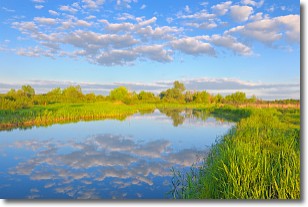Weather Alert in Minnesota
Flood Warning issued July 13 at 10:02PM CDT until July 20 at 7:00PM CDT by NWS Twin Cities/Chanhassen MN
AREAS AFFECTED: Chippewa, MN; Lac qui Parle, MN; Yellow Medicine, MN
DESCRIPTION: ...The Flood Warning continues for the following rivers in Minnesota... Minnesota River at Morton affecting Renville and Redwood Counties. ...The Flood Warning is extended for the following rivers in Minnesota... Minnesota River at Montevideo affecting Yellow Medicine, Chippewa and Lac qui Parle Counties. ...The Flood Warning is cancelled for the following rivers in Minnesota... Minnesota River at Granite Falls HWY 212 affecting Yellow Medicine, Chippewa and Renville Counties. .River levels continue to fall steadily as a lack of widespread rainfall continues through the next couple days before rain becomes more likely Tuesday into Wednesday. Granite Falls is exactly at minor flood stage as of 10pm, however it should drop below flood stage within the hour so electing to cancel it now instead of with the next forecast package in the morning. * WHAT...Minor flooding is occurring and minor flooding is forecast. * WHERE...Minnesota River at Montevideo. * WHEN...Until Sunday evening. * IMPACTS...At 14.0 feet, Low lying areas and some roads along the river begin flooding, along with some basements of houses along the river. * ADDITIONAL DETAILS... - At 900 PM CDT Sunday, the stage was 15.4 feet. - Recent Activity...The maximum river stage in the 24 hours ending at 900 PM CDT Sunday was 15.4 feet. - Forecast...The river is expected to fall below flood stage Sunday, July 20 and continue falling to 13.7 feet Sunday, July 20. - Flood stage is 14.0 feet. - Flood History...This crest compares to a previous crest of 15.3 feet on 03/03/1996.
INSTRUCTION: Turn around, don't drown when encountering flooded roads. Most flood deaths occur in vehicles. Caution is urged when walking near riverbanks.
Want more detail? Get the Complete 7 Day and Night Detailed Forecast!
Current U.S. National Radar--Current
The Current National Weather Radar is shown below with a UTC Time (subtract 5 hours from UTC to get Eastern Time).

National Weather Forecast--Current
The Current National Weather Forecast and National Weather Map are shown below.

National Weather Forecast for Tomorrow
Tomorrow National Weather Forecast and Tomorrow National Weather Map are show below.

North America Water Vapor (Moisture)
This map shows recent moisture content over North America. Bright and colored areas show high moisture (ie, clouds); brown indicates very little moisture present; black indicates no moisture.

Weather Topic: What is Sleet?
Home - Education - Precipitation - Sleet
 Next Topic: Snow
Next Topic: Snow
Sleet is a form of precipitation in which small ice pellets are the primary
components. These ice pellets are smaller and more translucent than hailstones,
and harder than graupel. Sleet is caused by specific atmospheric conditions and
therefore typically doesn't last for extended periods of time.
The condition which leads to sleet formation requires a warmer body of air to be
wedged in between two sub-freezing bodies of air. When snow falls through a warmer
layer of air it melts, and as it falls through the next sub-freezing body of air
it freezes again, forming ice pellets known as sleet. In some cases, water
droplets don't have time to freeze before reaching the surface and the result is
freezing rain.
Next Topic: Snow
Weather Topic: What are Stratocumulus Clouds?
Home - Education - Cloud Types - Stratocumulus Clouds
 Next Topic: Stratus Clouds
Next Topic: Stratus Clouds
Stratocumulus clouds are similar to altocumulus clouds in their
fluffy appearance, but have a slightly darker shade due to their additional mass.
A good way to distinguish the two cloud types is to hold your hand out and measure
the size of an individual cloud; if it is the size of your thumb it is generally
an altocumulus cloud, if it is the size of your hand it is generally a
stratocumulus cloud.
It is uncommon for stratocumulus clouds to produce precipitation, but if they do
it is usually a light rain or snow.
Next Topic: Stratus Clouds
Current conditions powered by WeatherAPI.com




